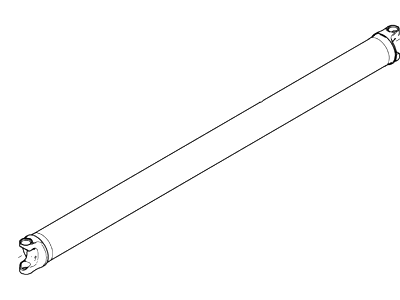

My Garage
My Account
Cart
Genuine Lincoln Town Car Drive Shaft
Axle Shaft- Select Vehicle by Model
- Select Vehicle by VIN
Select Vehicle by Model
orMake
Model
Year
Select Vehicle by VIN
For the most accurate results, select vehicle by your VIN (Vehicle Identification Number).
7 Drive Shafts found
Lincoln Town Car Drive Shaft
Drive Shaft in Lincoln Town Car automobiles is a critical item that transmits power/torque from the engine/ transmission to the drive wheels. It is used to transmitting mechanical energy and rotation between different components in the drive train; may use universal joints or splined joint if there are misalignment. Depending on the model of the Lincoln Town Car and its transmission type and configuration, the drive shafts may be of one-piece, two-piece, or slip in the tube design, and in some cases, there could be the multiple shaft to transfer power to four or all wheels of the car. In summary, the Driveshaft in Lincoln Town Car vehicles provides itself for being strong and at the same time light enough to help transmit powers effectively and at the same time counteract the force of inertia.
We provide a wide range of Lincoln Town Car Drive Shaft at the best prices possible. If you need Lincoln Town Car Drive Shaft, you can shop with confidence on our website. All our OEM parts come with a manufacturer's warranty and are delivered to your door step with a fast delivery service.
Lincoln Town Car Drive Shaft Parts Questions & Experts Answers
- Q: How to remove and reinstall a driveshaft on a Lincoln Town Car?A:Raise the rear of the vehicle and support it securely on jackstands. Mark the relationship of the driveshaft to the differential companion flange to ensure that the driveshaft retains its dynamic balance after reinstalling it. Remove the bolts and separate the driveshaft from the differential companion flange using a 12-point socket or box end wrench. To remove the bolts that attach the driveshaft to the differential companion flange, insert a small prybar or large screwdriver through the rear U-joint and hold the driveshaft while you break loose the four flange bolts. Pull the driveshaft toward the rear to remove it. Wrap a plastic bag tightly around the extension housing of the transmission to prevent fluid loss. Installation is the reverse of removal. Be sure to align the reference marks made during removal. The manufacturer recommends that new bolts be used when installing the driveshaft. If new bolts are not available, use thread-locking compound on the original bolts.
- Q: How to visually inspect and check the driveshaft for any issues on Lincoln Town Car?A:Raise the rear of the vehicle and support it securely on jackstands. Crawl under the vehicle and visually inspect the driveshaft for any dents or cracks in the tubing, if any are found, the driveshaft must be replaced. Check for any oil leakage at the front and rear of the driveshaft. Leakage where the driveshaft enters the transmission indicates a defective transmission rear seal, while leakage where the driveshaft enters the differential indicates a defective pinion seal. While under the vehicle, have an assistant turn a rear wheel so the driveshaft will rotate. As it does, make sure the Universal Joints are operating properly without binding, noise or looseness. The universal joints can also be checked with the driveshaft motionless, by gripping your hands on either side of the joint and attempting to twist the joint. Any movement at all in the joint is a sign of considerable wear. Lifting up on the shaft will also indicate movement in the universal joints. Finally, check the driveshaft mounting bolts at the ends to make sure they are tight.



